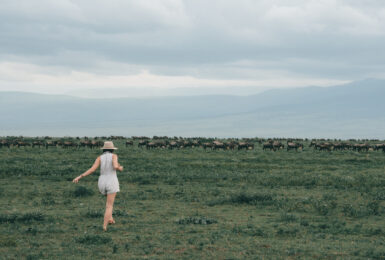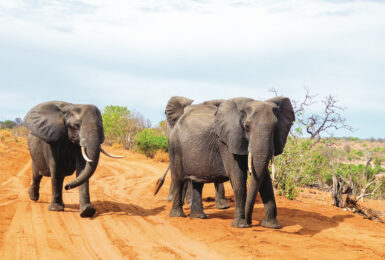At six-two and Contiki, we’re all about harnessing our power to make a difference and following our passions whenever we can. It’s great then, that we recently met a woman who embodies both. Renowned National Geographic photographer and TreadRight Wildlife Ambassador Ami Vitale has documented war zones and helped to tell some of the most compelling wildlife environmental stories of all time – including efforts to save the white rhino and reintroducing pandas to the wild.
Here, she shares her view on travelling more consciously and putting our activism into practice to help save the planet…
Tell us about your career journey…
As a young woman, I was painfully shy and introverted. When I picked up a camera, I discovered it could be my hidden superpower. Photography was this passport to the world and a tool for self-empowerment because it gave me a reason to interact with people while taking the attention away from myself.
When I was in my early twenties, I applied for a grant from The Alexia Foundation for World Peace to go to the West African country of Guinea Bissau. I was still very much an amateur photographer and packed my bags with a Nikon FM2, 100 rolls of film, an English/Fulani dictionary and headed to a tiny village in the centre of the country. When I landed, I bought two huge sacks of rice, anti-malarial medicines and a couple of chickens. I thought I would stay for a few weeks. Those weeks turned into months, those months into a half a year.
What I discovered was not the Africa that I’d read about. It’s usually defined on the one extreme, either as war and famines and plagues, or the idealized world of safaris and exotic animals. What I found was something different and more complex. I found people deeply connected to the natural world. I think we often go to a place with the story already written in our heads before we land, but Guinea Bissau taught me that it takes time to understand and tell one another’s stories and once you do take the time, you are transformed.
Later, my career took a turn and I began covering some of the most horrific conflicts that were around at that time. My job was to illuminate them and deliver what the editors and my audience wanted, and those were stories that backed the headlines. I covered regions like Africa and the Middle East, conflicts like Kosovo and the long-disputed region of Kashmir.

Image source:Ami Vitale
What has been your biggest learning so far?
I’ve learnt that we must shine a light on these conflicts and humanize those caught in the middle, but we also must take the time to lift the veil and give a broader vision of what the world looks like. If you look only at the news on your TV screen, the world looks like a terrifying place with lots of people who are somehow different from us. I often think, what would happen if we chose to illuminate the things that unite us as humans rather than only ever emphasizing our differences?
Why did you decide to become TreadRight’s Wildlife Ambassador?
Planet Earth is the only home we have and what happens next is in all of our hands. I want to engage with partners who understand the importance of this. The challenges are formidable but no time in human history has there been a greater awareness and opportunity for transformation. We can figure this out and I’m proud to be partnering with an organization that is looking for solutions. It’s important that every one of us tries to have an impact. By becoming an ambassador, I hope to have another platform to share these messages and show that becoming engaged really does matter.
What’s your advice for travelling more consciously?
1. Do your research
Our travel choices have profound impacts on the people and the wildlife who live on this planet. I’d always recommend doing some research to find out if you’re visiting a place that is actively protecting wildlife and creating opportunities for communities to benefit from wildlife.
2. Keep your distance
Also, loving wild creatures means keeping your distance and allowing them to be wild. I think people often forget the ‘wild’ in ‘wildlife’. Under no circumstances should there be any interference, as contact can affect their chances of survival. Getting too close can destroy habitats or cause serious stress to animals.
3. Learn before snapping
As a photographer, I can completely understand the desire to take beautiful images, but not to the detriment of animals’ wellbeing. So, it’s also important to remember that it’s not about you and your images. Rather, learn as much as you can about the creatures and their habitats before you go out to photograph them.
What’s one thing everyone can do right now to protect wildlife around the world?
Donate, use your voice, vote for politicians that care about the planet and live a more sustainable life. Be mindful about what you eat and buy, you’ll have an impact based on which kinds of companies you choose to support. The truth is, there isn’t one thing we can do to change the planet. There are lots of little things. We’re not perfect and we’re not always going to get it right, but these are all important things to think about.
What’s your advice for young activists?
Embrace your fear. Inspiration can often come from places of discomfort. How can one person make a real difference in the world? The answer is, a lot! From donating to volunteering – do all you can to care for the plants and creatures that inhabit the earth. Above all, treat other humans with empathy. There is room enough for all of us — but only if we hear (truly hear) what others are saying.














